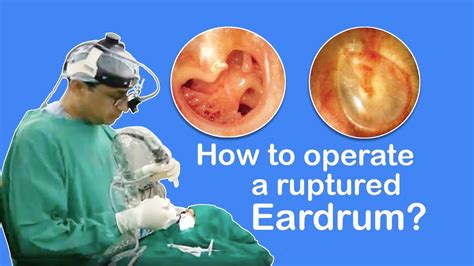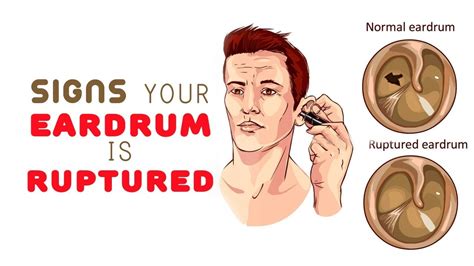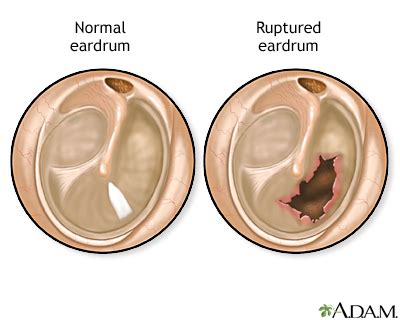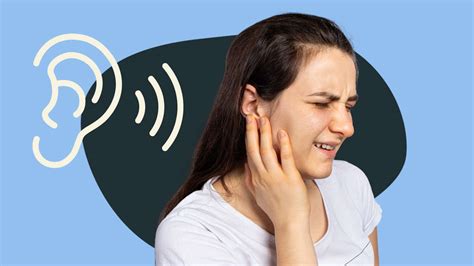Intro
Heal a burst eardrum naturally with effective treatments. Learn about eardrum rupture symptoms, perforated eardrum causes, and tympanic membrane repair for quick recovery and hearing restoration.
A burst eardrum, also known as a ruptured eardrum or tympanic membrane perforation, is a common condition that can cause significant discomfort and hearing loss. The eardrum, a thin membrane that separates the outer ear from the middle ear, plays a crucial role in our ability to hear and maintain balance. When the eardrum is damaged, it can lead to a range of symptoms, including ear pain, discharge, and hearing loss. Fortunately, in many cases, a burst eardrum can heal on its own with proper care and treatment.
The importance of seeking medical attention for a burst eardrum cannot be overstated. If left untreated, a ruptured eardrum can lead to complications, such as middle ear infections, meningitis, and permanent hearing loss. Moreover, a burst eardrum can also affect our balance and equilibrium, making it difficult to perform everyday activities. By understanding the causes, symptoms, and treatment options for a burst eardrum, individuals can take proactive steps to protect their hearing and overall health.
The healing process for a burst eardrum typically involves a combination of self-care measures, medical treatment, and time. In some cases, a burst eardrum may require surgical intervention to repair the damaged tissue. However, with prompt and proper care, many individuals can experience significant improvement in their symptoms and hearing. In this article, we will delve into the world of burst eardrums, exploring the causes, symptoms, treatment options, and prevention strategies to help individuals better understand and manage this condition.
Causes of a Burst Eardrum

Types of Eardrum Ruptures
There are several types of eardrum ruptures, including traumatic, infectious, and spontaneous ruptures. Traumatic ruptures occur when the eardrum is damaged due to trauma, such as a direct blow to the ear or a sudden change in air pressure. Infectious ruptures occur when the eardrum is damaged due to a middle ear infection. Spontaneous ruptures occur when the eardrum ruptures without any apparent cause or trauma. Understanding the type of eardrum rupture is essential for determining the best course of treatment.Symptoms of a Burst Eardrum

Diagnosing a Burst Eardrum
Diagnosing a burst eardrum typically involves a physical examination and a review of the individual's medical history. A healthcare provider may use an otoscope to visualize the eardrum and check for any signs of damage or infection. Additional tests, such as a hearing test or a tympanometry test, may also be ordered to assess the individual's hearing and middle ear function.Treatment Options for a Burst Eardrum

Self-Care Measures for a Burst Eardrum
Self-care measures can play an essential role in promoting healing and reducing the risk of complications. Keeping the ear dry, avoiding loud noises, and avoiding blowing one's nose can help reduce the risk of further damage to the eardrum. Additionally, using earplugs or earmuffs to protect the ear from loud noises and avoiding flying or diving can also help promote healing.Prevention Strategies for a Burst Eardrum

Risk Factors for a Burst Eardrum
Certain risk factors, such as a history of ear infections, Eustachian tube dysfunction, and trauma to the ear, can increase an individual's risk of developing a burst eardrum. Understanding these risk factors can help individuals take proactive steps to protect their hearing and overall health.Complications of a Burst Eardrum

Long-Term Effects of a Burst Eardrum
The long-term effects of a burst eardrum can vary depending on the severity of the rupture and the individual's overall health. In some cases, a burst eardrum can lead to permanent hearing loss, tinnitus, or balance problems. However, with prompt and proper care, many individuals can experience significant improvement in their symptoms and hearing.Conclusion and Next Steps

We invite you to share your thoughts and experiences with us. Have you or a loved one ever experienced a burst eardrum? What were your symptoms, and how did you treat the condition? Share your story with us in the comments below, and let's work together to promote awareness and understanding of this common condition.
What are the symptoms of a burst eardrum?
+The symptoms of a burst eardrum can include ear pain, discharge, and hearing loss. Ear pain can range from mild to severe and may be accompanied by a feeling of fullness or pressure in the ear. Discharge from the ear can be bloody or pus-like and may have a foul odor. Hearing loss can range from mild to severe and may be temporary or permanent.
How is a burst eardrum diagnosed?
+Diagnosing a burst eardrum typically involves a physical examination and a review of the individual's medical history. A healthcare provider may use an otoscope to visualize the eardrum and check for any signs of damage or infection. Additional tests, such as a hearing test or a tympanometry test, may also be ordered to assess the individual's hearing and middle ear function.
What are the treatment options for a burst eardrum?
+Treatment for a burst eardrum typically involves a combination of self-care measures, medical treatment, and time. Self-care measures, such as keeping the ear dry and avoiding loud noises, can help promote healing and reduce the risk of complications. Medical treatment may include antibiotics to treat any underlying infections, pain medication to manage ear pain, and ear drops to help dry out the ear. In some cases, surgical intervention may be necessary to repair the damaged tissue.
